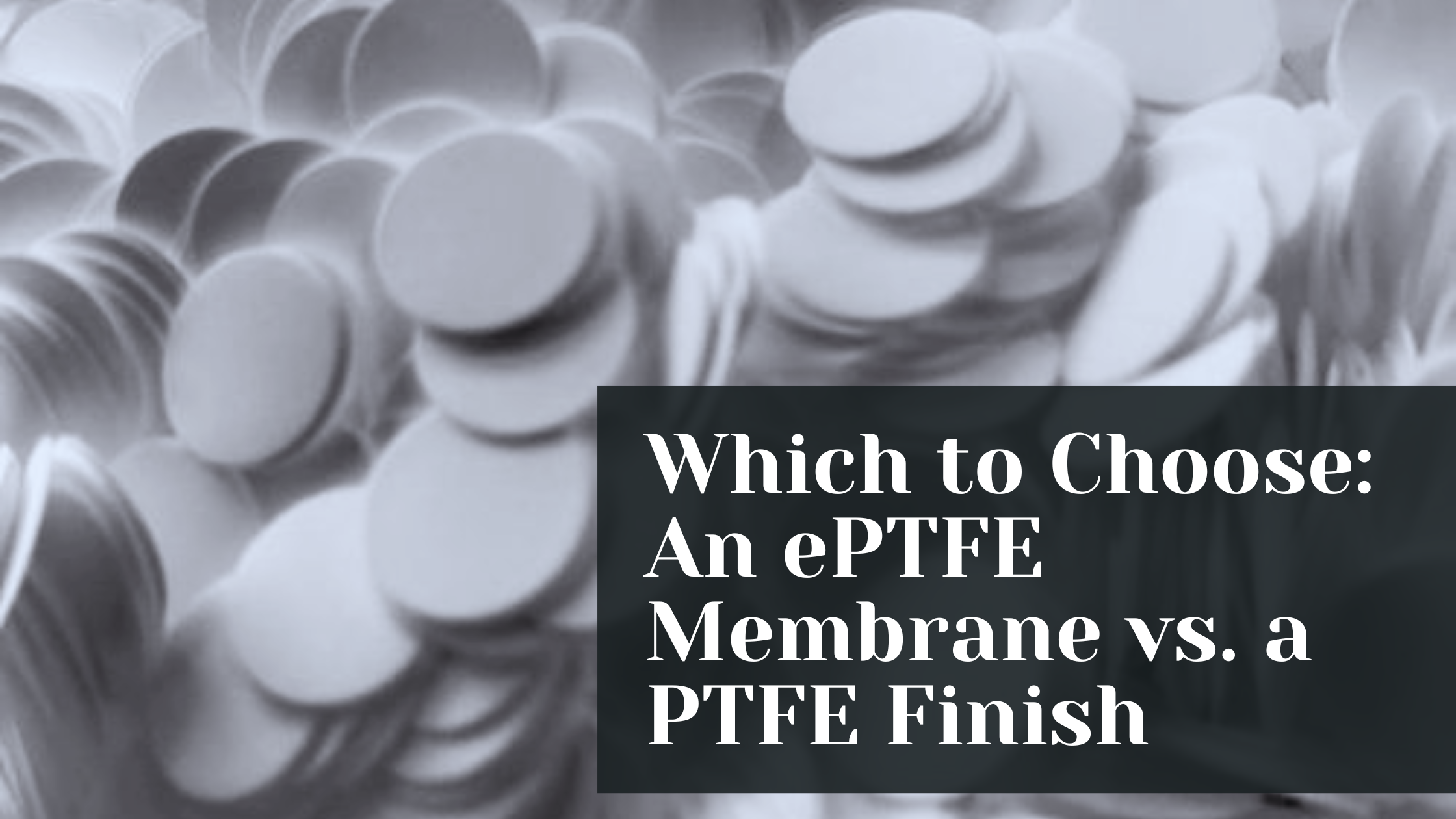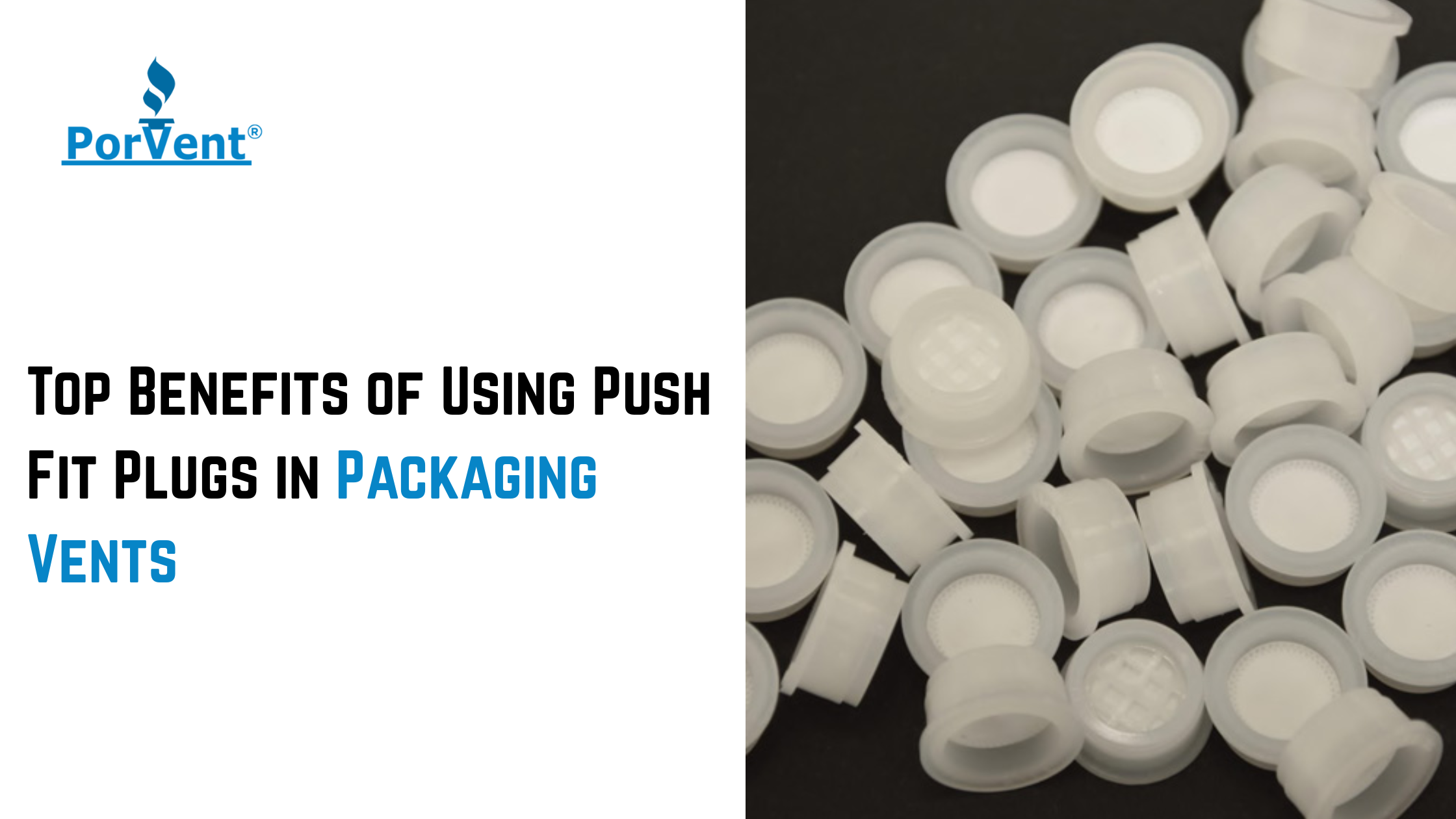Which to Choose: An ePTFE Membrane vs. a PTFE Finish?

Strong 8k brings an ultra-HD IPTV experience to your living room and your pocket.
The devil is in the details when it comes to product protection, especially in sensitive applications like pharmaceuticals, agrochemicals, or consumer electronics. One of those crucial details? Choosing the right breathable barrier. You're already on the right track if you're comparing ePTFE membranes and PTFE membranes. But which one is best suited for your product, packaging, or application?
At PorVent®, we often field this exact question. And while both materials are rooted in Polytetrafluoroethylene (PTFE), they function differently, and those differences can make or break your product’s integrity. Let’s break it all down.
What Is PTFE?
Before diving into the differences between ePTFE and PTFE finishes, let’s clarify the material itself.
PTFE, or Polytetrafluoroethylene, is a high-performance fluoropolymer known for:
- Excellent chemical resistance
- Hydrophobic and oleophobic properties
- High thermal stability
- Low coefficient of friction
Used widely in non-stick cookware, cable insulation, and industrial applications, PTFE is incredibly versatile. But in the world of packaging and venting, it's often processed into two forms: expanded PTFE (ePTFE) and PTFE-coated finishes.
ePTFE Membranes: Engineered for Breathability
ePTFE (expanded PTFE) membranes are created by mechanically stretching PTFE under controlled conditions. This expansion introduces a microporous structure—think of it like a spiderweb of tiny interconnected nodes and fibrils.
- These pores give ePTFE its standout characteristics:
- Highly breathable: Allows gases and vapor to pass through freely.
- Water and dust resistance: Blocks liquid ingress while permitting air exchange
- Consistent performance: Uniform pore size and structure lead to predictable results.
In packaging, this is especially useful. Whether it's allowing gas exchange in a sealed bottle or preventing vacuum collapse during altitude changes, ePTFE acts as a smart vent.
Where ePTFE Shines:
- Pharmaceutical packaging: Prevents pressure buildup in liquid medications without compromising sterility.
- Agrochemical containers: Balances internal and external pressures while keeping out contaminants.
- Consumer electronics: Protects sensitive circuitry from water and dust, while letting heat and vapor escape.
PorVent® porous ePTFE discs are precisely designed for these roles, offering the ideal balance of air permeability and protection.
PTFE Finishes: A Surface-Level Solution
PTFE finish refers to a surface coating applied to a substrate (like fabric, metal, or plastic). It adds the signature PTFE traits—slipperiness, chemical resistance, and repellency—but without the porous structure of ePTFE.
It’s more of a protective layer than a breathable one.
Key characteristics of PTFE-coated finishes include:
- Non-stick surface
- Resistance to corrosion and chemicals
- Minimal gas permeability
- No intrinsic venting capabilities
This makes PTFE finishes great for non-stick or protective applications, but not ideal when breathability is required.
Where PTFE Finishes Fit:
- Industrial conveyors or gaskets: Where slip resistance and chemical resilience are key.
- Cookware and bakeware
- Protective linings in harsh environments
Key Differences: ePTFE vs. PTFE Finish
Let’s summarize the main differences between these two forms of PTFE:
Why Venting Matters: The Pressure Problem
Imagine a sealed agrochemical bottle being shipped from a coastal factory to a high-altitude warehouse. As elevation increases, atmospheric pressure drops. Without venting, the internal pressure can build, leading to leakage, bulging, or even rupture.
This is where ePTFE’s venting capability becomes mission-critical.
ePTFE membranes allow air and vapor to escape while blocking external elements like water, dust, and microbial contaminants. It’s not just convenient—it’s vital for product integrity, user safety, and regulatory compliance.
Choosing the Right Solution: Questions to Ask
To decide between an ePTFE membrane and a PTFE finish, consider the following:
1. Does your application require breathability?
If yes, ePTFE is the clear choice. PTFE finishes won’t allow air or vapor to pass through.
2. Are you looking for protection against liquids or contaminants?
Both materials offer chemical and moisture resistance, but only ePTFE adds airflow.
3. Is your packaging exposed to pressure differentials?
Products shipped across altitudes or stored in variable climates benefit greatly from ePTFE venting.
4. Do you need a flexible, adaptable component?
ePTFE membranes are available in disc, sheet, or roll form—custom-cut to your product specs.
5. What’s your cost-to-performance ratio?
While ePTFE membranes may carry a slightly higher initial cost than simple PTFE finishes, the long-term savings from reduced product loss, fewer complaints, and better shelf life can be significant.
Real-World Results: PorVent® in Action
PorVent® porous PTFE discs are trusted by brands around the world to protect what matters. Our customers have reported:
- Reduced leakage rates
- Better product shelf stability
- Fewer returns due to packaging failures
- Improved customer satisfaction
Whether it’s a delicate bioscience compound or a volatile pesticide, venting makes the difference. And PorVent® ePTFE technology ensures your packaging performs under pressure—literally.
Final Thoughts: Choose Function, Not Just Form
While PTFE finishes have their place in industrial applications, they simply can’t do the job of an ePTFE membrane when breathability, venting, and product protection are on the line.
In today’s global supply chains, packaging must be smarter, more durable, and performance-driven. Choosing the right PTFE solution isn’t just about chemistry—it’s about context. And that’s where PorVent® steps in.
Have questions or want to learn how PorVent® ePTFE solutions can be tailored to your packaging needs? Get in touch with us or explore more about Porous PTFE Discs here.
Note: IndiBlogHub features both user-submitted and editorial content. We do not verify third-party contributions. Read our Disclaimer and Privacy Policyfor details.



